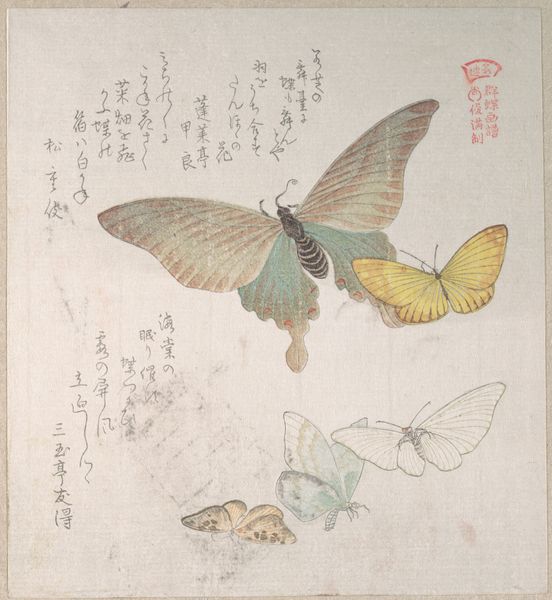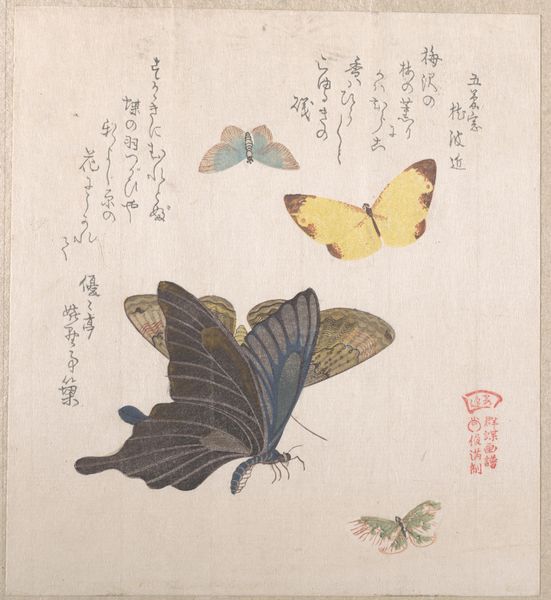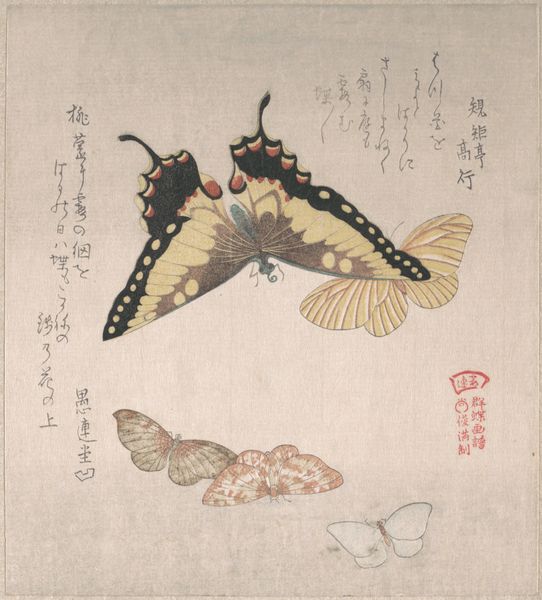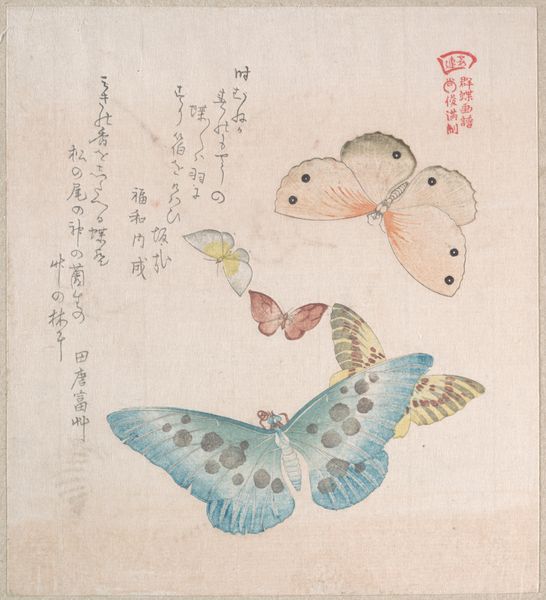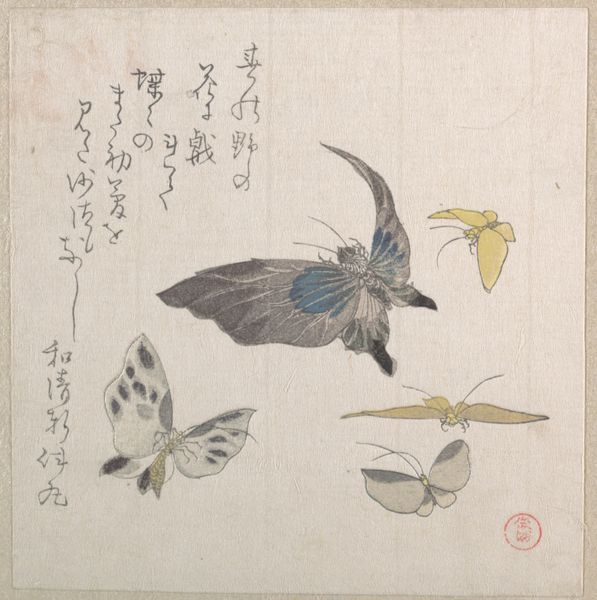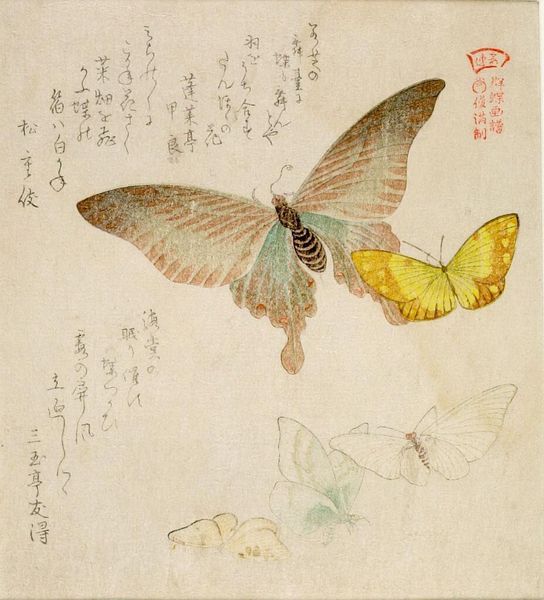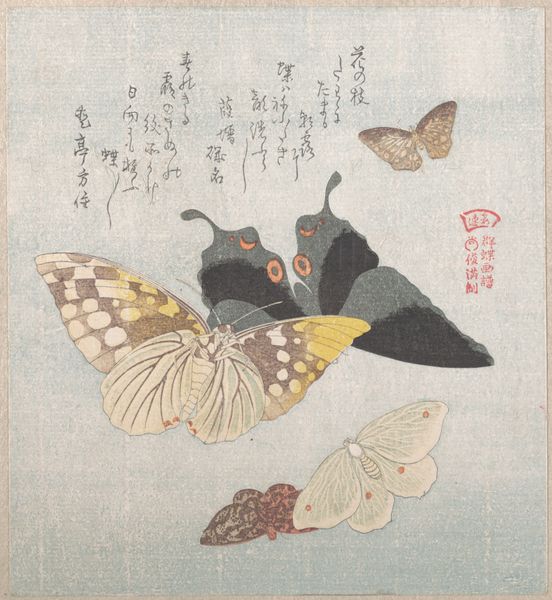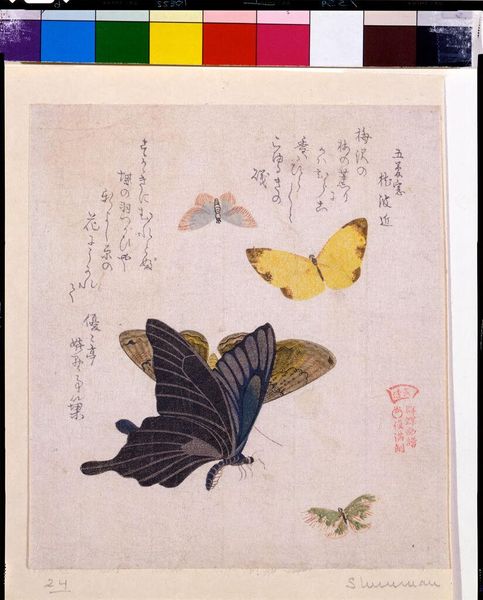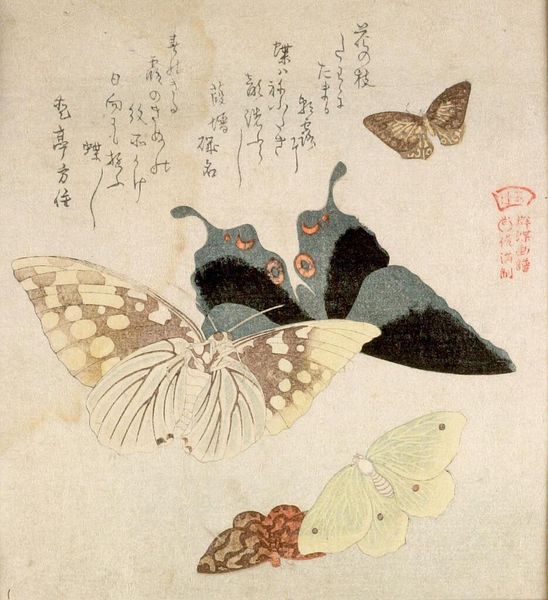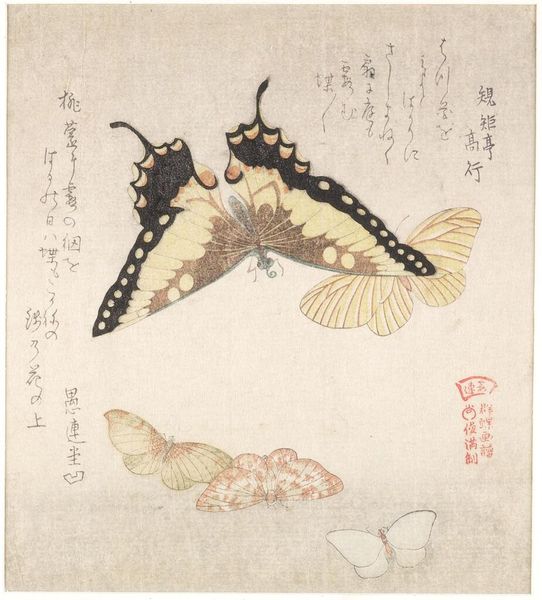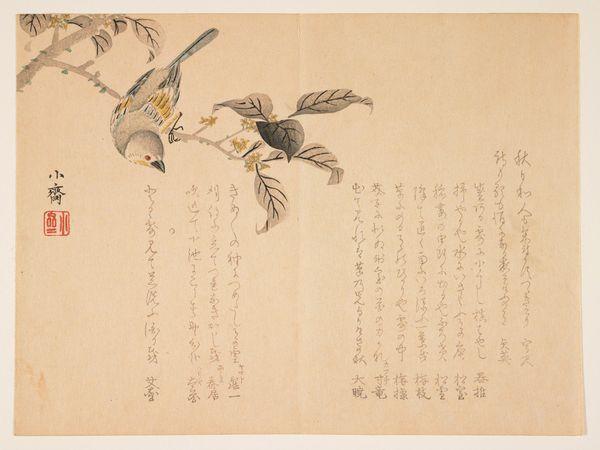
drawing, print, watercolor
#
drawing
#
narrative-art
# print
#
asian-art
#
ukiyo-e
#
figuration
#
watercolor
Dimensions: 7 3/4 x 7 3/16 in. (19.7 x 18.3 cm)
Copyright: Public Domain
Curator: Welcome to the Met. Today, we're looking at Kubo Shunman's 19th-century print titled "Various Moths and Butterflies." It's a beautiful example of Ukiyo-e, rendered in watercolor and drawing techniques. Editor: The immediate feeling is one of delicacy. The muted watercolor palette lends it a ghostly, ephemeral quality. Are we seeing decay, perhaps? The way they’re scattered across the composition hints at loss and a fleeting beauty. Curator: Indeed. Notice how Shunman masterfully employs line and wash. The lines, though delicate, define form and create subtle variations in texture. The artist also leaves large blank space—strategically—which heightens our sense of visual space and implies lightness. What can you make of the composition itself? Editor: I'm intrigued by the contrast between the seemingly scientific study of the moths and butterflies and what appears to be script. I can imagine a craftsman poring over this work to decorate textiles. Was this possibly intended for patterns on clothing? Is there a connection to silk production, for example? Curator: Precisely. Japanese artists during this era often collaborated with textile designers and other artisans. And yes, the meticulous rendering would be vital for textile patterns and techniques, indicating close collaboration between high art and what one might think of as applied arts. Consider, too, how dyes were extracted and applied at the time, and how these might inform a reading of the coloring. Editor: Absolutely. I'm wondering if the types of moths or butterflies are indicative of specific locations or seasons and the process of procuring dyes. Curator: An astute observation. This print becomes far richer once we account for the intersection of artistic skill, craft traditions, material production and cultural narratives circulating during the Edo period. It is art made from practice and experience! Editor: This truly reframes how I see the composition – moving away from melancholy towards an appreciation of the materials and labor invested. Curator: Quite. And there are multiple valid interpretations here, both focusing on formal design or the wider production processes that created it.
Comments
No comments
Be the first to comment and join the conversation on the ultimate creative platform.
